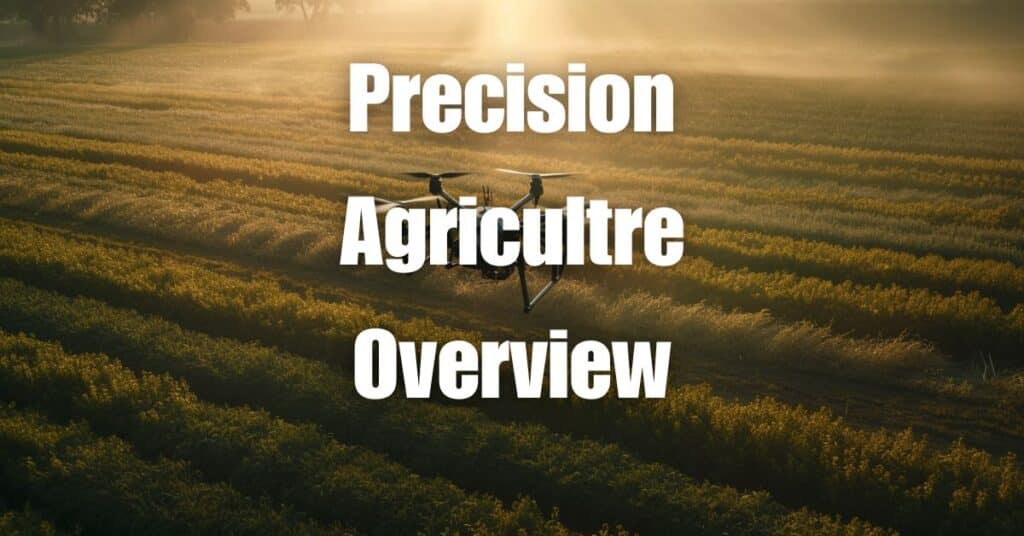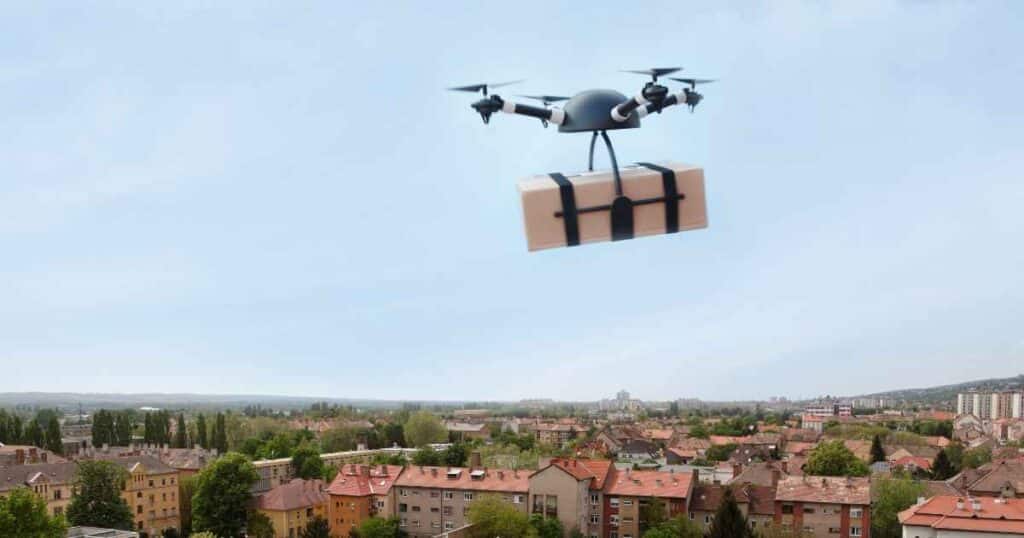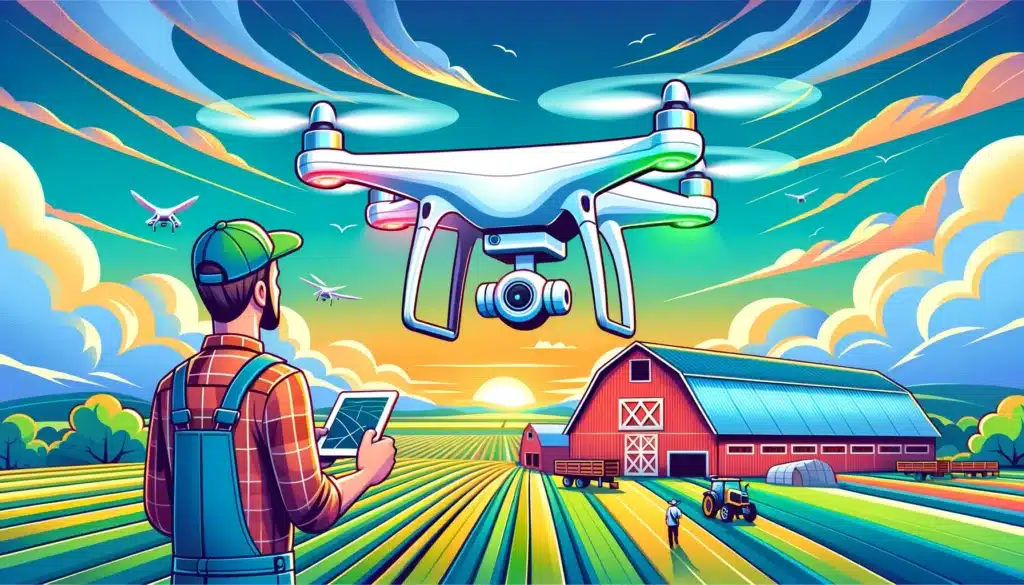Welcome to the world of precision agriculture! In this precision agriculture overview, we’ll take a deep dive into the concepts, methodologies, and benefits of this innovative approach to farming. Leveraging advanced technologies like aerial precision tech, precision agriculture is transforming the way farmers manage their crops, optimize resources, and boost productivity. Read on to learn how this cutting-edge approach is reshaping the agricultural landscape.
Understanding Precision Agriculture
What is Precision Agriculture?
Precision agriculture, also known as precision farming or site-specific crop management, is a modern farming technique that utilizes advanced technology, data analysis, and spatial information to optimize agricultural practices. The goal is to increase crop yield, improve resource efficiency, and reduce environmental impact by tailoring farming practices to the unique needs of individual fields and crops.
Concepts of Precision Agriculture
Precision agriculture is built on several key concepts, including:
- Data collection: Accurate and timely data is crucial for making informed decisions. Farmers use various sensors, drones, and satellite imagery to gather data on soil properties, crop health, and environmental factors.
- Spatial variability: This refers to the natural variation in soil and crop properties within a field. Precision agriculture takes this variability into account and tailors farming practices accordingly.
- Decision support systems: These are computer-based tools that help farmers analyze the collected data and make decisions about crop management, such as when to irrigate, apply fertilizers, or control pests.
- Precision machinery: Advanced machinery, such as GPS-guided tractors and automated sprayers, allows farmers to implement site-specific farming practices with great accuracy.
Primary Aim in Precision Agriculture
The primary aim of precision agriculture is to improve the efficiency and sustainability of agricultural production. By carefully managing resources and tailoring farming practices to the unique needs of each field, farmers can reduce waste, minimize environmental impact, and maximize crop yields.
Examples of Precision Agriculture
Examples of precision agriculture technologies and techniques include:
- GPS-guided tractors and harvesters
- Variable rate application of fertilizers, pesticides, and irrigation
- Soil and crop sensors for real-time monitoring of field conditions
- Drones and satellite imagery for crop scouting and monitoring
- Data analysis tools for decision-making and farm management
Methodology and Principles of Precision Farming
Methodology of Precision Farming
The methodology of precision farming involves a systematic process of collecting, analyzing, and applying data to make informed decisions about crop management. This process typically includes the following steps:
- Data collection: Gathering information on soil properties, crop health, and environmental factors using various tools, such as soil sensors, drones, and satellite imagery.
- Data analysis: Processing and interpreting the collected data using specialized software and decision support systems to identify patterns, trends, and opportunities for improvement.
- Decision-making: Using the insights gained from data analysis to make informed decisions about crop management, including when and where to apply fertilizers, irrigate, or control pests.
- Implementation: Carrying out the decisions using precision machinery and equipment, such as GPS-guided tractors, automated sprayers, and variable rate applicators, to ensure accuracy and efficiency.
- Evaluation: Continuously monitoring the results of implemented decisions and adjusting farming practices as needed to optimize crop production and resource use.
The 5 R’s of Precision Agriculture
The 5 R’s of precision agriculture provide a framework for optimizing resource use and maximizing crop yields:
- Right source: Ensuring that the appropriate type and formulation of nutrients, pesticides, or other inputs are applied to the crops.
- Right rate: Applying the correct amount of inputs to match the specific needs of the crops and minimize waste.
- Right time: Timing the application of inputs to coincide with critical growth stages and environmental conditions for maximum effectiveness.
- Right place: Targeting the application of inputs to the specific locations within the field where they are needed most.
- Right method: Utilizing the most effective and efficient application techniques and equipment to deliver the inputs.
The 4 Steps in the Precision Farming Cycle
The precision farming cycle is a continuous process that involves four key steps:
- Observation: Monitoring field conditions, soil properties, and crop health using various data collection tools and technologies.
- Diagnosis: Analyzing the collected data to identify issues, opportunities, and areas for improvement in crop management.
- Prescription: Developing a customized plan to address the identified issues and optimize farming practices based on the data analysis.
- Implementation: Executing the prescribed plan using precision machinery, equipment, and techniques to ensure accuracy and efficiency.
This cycle is repeated throughout the growing season, allowing farmers to constantly refine their practices and adapt to changing conditions to achieve the best possible results.
Comparing Farming Methods
How Precision Farming is Different
Precision farming differs from traditional farming methods in its reliance on data-driven decision-making, advanced technology, and site-specific management. While traditional farming often relies on experience, intuition, and generalized practices, precision farming uses data collected from various sources to make informed decisions tailored to the specific needs of each field and crop. This results in more efficient resource use, higher crop yields, and reduced environmental impact.
The 4 Crop Method and 4 Field System of Farming
The 4 crop method, also known as crop rotation, is a practice where farmers grow four different crops in a specific sequence on the same field over a period of four years. This helps to maintain soil fertility, control pests and diseases, and increase crop yields.
The 4 field system of farming is an evolution of the 4 crop method, dividing a large field into four smaller sections. Each section is planted with a different crop, and the crops are rotated among the sections each year. This system further improves soil fertility, reduces the need for chemical fertilizers, and enhances overall farm productivity.
The 3 Main Farming Methods
- Traditional farming: This method relies on manual labor, animal power, and simple tools for cultivation, planting, and harvesting. It often employs practices passed down through generations, with little reliance on modern technology or data-driven decision-making.
- Conventional farming: Conventional farming utilizes modern machinery, synthetic fertilizers, and chemical pesticides to increase crop yields and productivity. However, it may have negative environmental impacts, such as soil degradation and pollution.
- Precision farming: Precision farming, as described earlier, leverages advanced technology, data analysis, and site-specific management to optimize agricultural practices, reduce waste, and minimize environmental impact.
Unique Agricultural Practices
Why Farmers Leave One Tree in a Field
Farmers sometimes leave a single tree standing in a field for various reasons, including:
- Providing shade and shelter for livestock
- Serving as a windbreak to protect crops from wind damage
- Conserving soil moisture and preventing erosion
- Supporting biodiversity by providing habitat for birds and beneficial insects
- Preserving the aesthetic appeal and historical significance of the landscape
The Three-Field System in the United States
The three-field system is an agricultural practice that was widely used in medieval Europe and later adopted in the United States. This system divides a field into three sections, with each section being planted with a different crop or left fallow (unplanted) in rotation. The rotation helps to maintain soil fertility, control pests and diseases, and increase crop yields.
In the United States, the three-field system was particularly popular among early settlers, who used it to manage their limited resources and adapt to the new environment. Today, it is still practiced in some regions as a means of preserving traditional farming methods and promoting sustainable agriculture.
Exploring Vertical Farming
Vertical or 3D Farming
Vertical farming, also known as 3D farming, is an innovative method of growing crops in vertically stacked layers, typically in controlled indoor environments such as warehouses or greenhouses. This approach utilizes advanced technologies like hydroponics, aeroponics, and artificial lighting to optimize plant growth and resource efficiency.
Comparing Hydroponics and Vertical Farming
While both hydroponics and vertical farming employ soilless cultivation techniques, they differ in several ways:
- Hydroponics is a method of growing plants in nutrient-rich water, without the use of soil. It can be practiced in horizontal or vertical configurations and is often used in large-scale commercial greenhouses.
- Vertical farming refers specifically to the practice of stacking growing systems in vertical layers, often in indoor or controlled environments. Hydroponics is one of the technologies that can be used in vertical farming systems.
Most Efficient Vertical Farming
The efficiency of vertical farming systems depends on several factors, including the choice of crops, the technology employed, and the design of the facility. Some of the most efficient vertical farming practices include:
- Using energy-efficient LED lighting to provide optimal light wavelengths for plant growth
- Implementing closed-loop water systems to minimize water waste and recycle nutrients
- Selecting high-yield, fast-growing crops that are well-suited to vertical farming conditions
- Optimizing climate control and automation systems to maintain ideal growing conditions and reduce energy consumption
Benefits and Evolution of Farming Systems
Advantages of a Three-Field System
The three-field system offers several advantages over traditional monoculture or two-field systems:
- Improved soil fertility: Rotating crops helps to maintain soil nutrients and reduce the need for synthetic fertilizers.
- Pest and disease control: Crop rotation disrupts the life cycles of pests and diseases, reducing their populations and minimizing crop damage.
- Increased crop yields: By allowing a portion of the land to recover each year, the three-field system helps to prevent soil exhaustion and promote higher crop yields.
How the Three-Field System Improved Farming
The introduction of the three-field system in medieval Europe marked a significant improvement in agricultural productivity and sustainability. By rotating crops and allowing fields to rest periodically, farmers were able to maintain soil fertility, reduce the need for fallowing, and increase crop yields. This system also helped to diversify the agricultural landscape, supporting a wider variety of crops and promoting food security.
Reasons for Using a Three-Field System
Farmers may choose to adopt a three-field system for several reasons, including:
- Enhancing soil fertility and reducing the need for synthetic fertilizers
- Controlling pests and diseases through crop rotation
- Increasing crop yields and overall farm productivity
- Promoting biodiversity and sustainable agriculture practices
- Preserving traditional farming methods and cultural heritage
The Future of Precision Agriculture
Emerging Technologies and Trends
As precision agriculture continues to evolve, new technologies and trends are shaping the future of the industry. Some of the most promising developments include:
- Artificial intelligence (AI): Machine learning algorithms are being used to analyze vast amounts of agricultural data, enabling more accurate predictions and smarter decision-making.
- Internet of Things (IoT): The integration of IoT devices and sensors into farming equipment and infrastructure is allowing for real-time monitoring and control of agricultural processes.
- Robotics and automation: Advanced robotics and autonomous systems are being developed to perform tasks such as planting, harvesting, and crop monitoring more efficiently and with less human intervention.
- Advanced imaging: High-resolution imaging technologies, such as hyperspectral and thermal imaging, are providing new insights into crop health and environmental conditions.
- Gene editing: Emerging techniques like CRISPR are enabling the development of new crop varieties with improved traits, such as resistance to pests, diseases, and environmental stressors.
Challenges and Opportunities
The future of precision agriculture is full of potential, but also presents a number of challenges and opportunities that must be addressed:
- Data management: The increasing volume and complexity of agricultural data require effective data management strategies and tools to ensure that information can be easily accessed, analyzed, and shared.
- Cybersecurity: As farming becomes more reliant on digital technology, securing systems and networks against cyber threats will be critical for protecting sensitive data and maintaining operational integrity.
- Skill development: The adoption of advanced technologies in agriculture demands a skilled workforce with expertise in areas such as data analysis, programming, and engineering.
- Environmental sustainability: Precision agriculture offers significant potential for reducing the environmental impact of farming practices, but efforts must be made to minimize the energy consumption and waste generated by new technologies.
- Economic viability: While precision agriculture can lead to increased efficiency and productivity, the high costs of implementing new technologies may be prohibitive for some farmers, particularly smallholders in developing countries.
Precision Agriculture and Global Food Security
The Role of Precision Agriculture in Addressing Global Challenges
Precision agriculture has the potential to play a crucial role in addressing global challenges such as climate change, population growth, and resource scarcity. By optimizing the use of resources like water, energy, and fertilizers, precision agriculture can help to:
- Increase crop yields: More efficient farming practices can lead to higher crop yields, helping to meet the growing demand for food.
- Reduce environmental impact: Precision agriculture techniques can minimize the environmental footprint of farming by decreasing greenhouse gas emissions, conserving water, and reducing pollution from fertilizers and pesticides.
- Enhance resilience: The use of data-driven decision-making and advanced technologies can help farmers adapt to changing environmental conditions and better manage risks associated with climate change, pests, and diseases.
Supporting the Adoption of Precision Agriculture Worldwide
To fully realize the potential of precision agriculture in promoting global food security, it is essential to support the widespread adoption of these practices and technologies. This may involve:
- Investing in research and development: Continued investment in agricultural research and innovation is needed to develop new technologies and refine existing ones.
- Building capacity: Training programs and resources must be made available to farmers and agricultural professionals to ensure they have the skills and knowledge needed to implement precision agriculture practices.
- Promoting access to technology: Efforts must be made to reduce the barriers to entry for smallholder farmers and those in developing countries, including addressing cost constraints and providing access to infrastructure, such as reliable internet connectivity.
- Encouraging collaboration: Collaboration between governments, private sector, academia, and farmers is crucial for sharing knowledge, resources, and best practices to advance precision agriculture globally.
By embracing precision agriculture and addressing the challenges and opportunities it presents, we can work towards a more sustainable, productive, and resilient global food system.
In conclusion, the integration of aerial precision tech and other advanced technologies is revolutionizing the agriculture industry. Precision agriculture techniques are optimizing resource use, increasing crop yields, and reducing the environmental impact of farming practices. By exploring the evolution of farming systems and understanding the future trends in precision agriculture, we can better prepare ourselves to address global challenges and promote food security for generations to come.
If you’re interested in learning more about precision agriculture and its potential impact on your own farming operations, we encourage you to visit our comprehensive guide: Soaring High: A Comprehensive Guide to Building and Growing Your Drone Business. For any drone services you might require, don’t hesitate to contact Blue Falcon Aerial.




